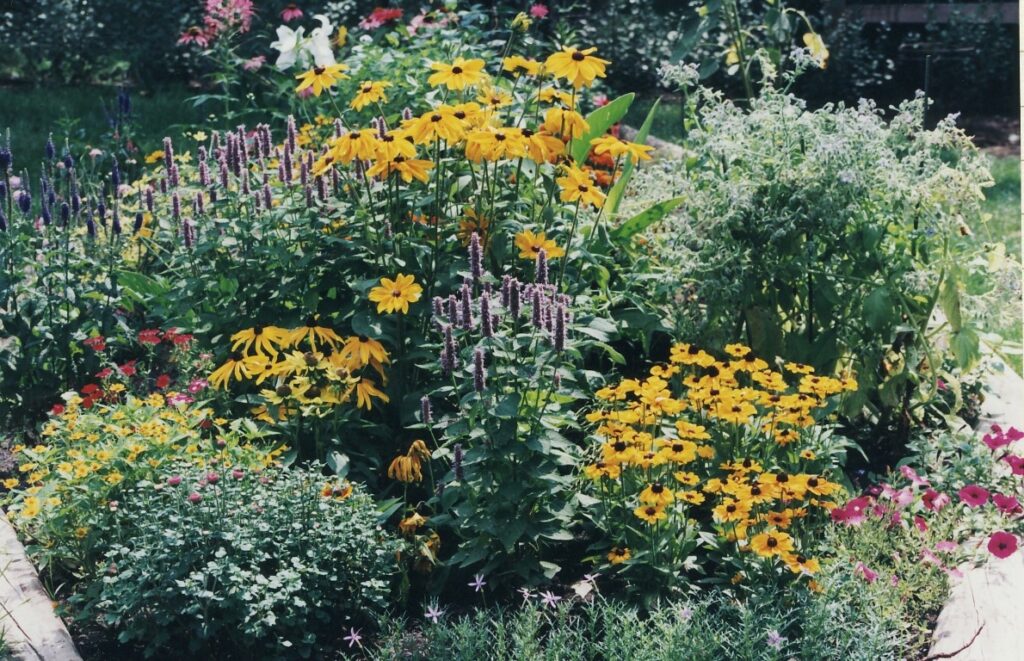If you purchase anise hyssop seeds once, you never have to buy them a second time because it’s so easy to save seeds for next year’s plants. As I’ve mentioned many times before, I love this this native herb because it attracts pollinators like crazy, and it grows just as happily in part-shade as it does in full sun. I’ve never seen a single animal or insect pest bother this plant in the two decades I’ve grown it.
And the seeds I’ve saved in the past have had a shelf life of at least 3 or 4 years (I haven’t tested it beyond that).
Late in the summer I was reminded to collect a fresh batch of seeds when I noticed the goldfinches landing on and pecking at the fading flowers.
I don’t wait until the seed heads are completely dry or by then most of the seeds will have already fallen out. That’s why you can still see a little purple in the above photo.
I collect the seed heads on a dry day and then let them sit in a little tray in my cool basement for a few weeks to dry out further.
When I’m ready to collect the seeds, I tap each seed head on my finger which causes them to come tumbling out. Then I scoop them up and store them in a plastic bag.
Often some plants in my flowerbeds will survive winter and get a good head start on the next growing season. But I sprout a few plants from seed each year as well, just in case. This member of the mint family does reseed, but unlike some of its other relatives, it’s easy to control, and it’s nice to have some volunteer plants available to stick in bare spots in a flowerbed.
Anise hyssop (also called licorice mint) is hardy in Zones 6-10 (but again often survives winter in my Zone 5 garden). The plants grow 2 to 3 feet tall and are a favorite of bumblebees.




